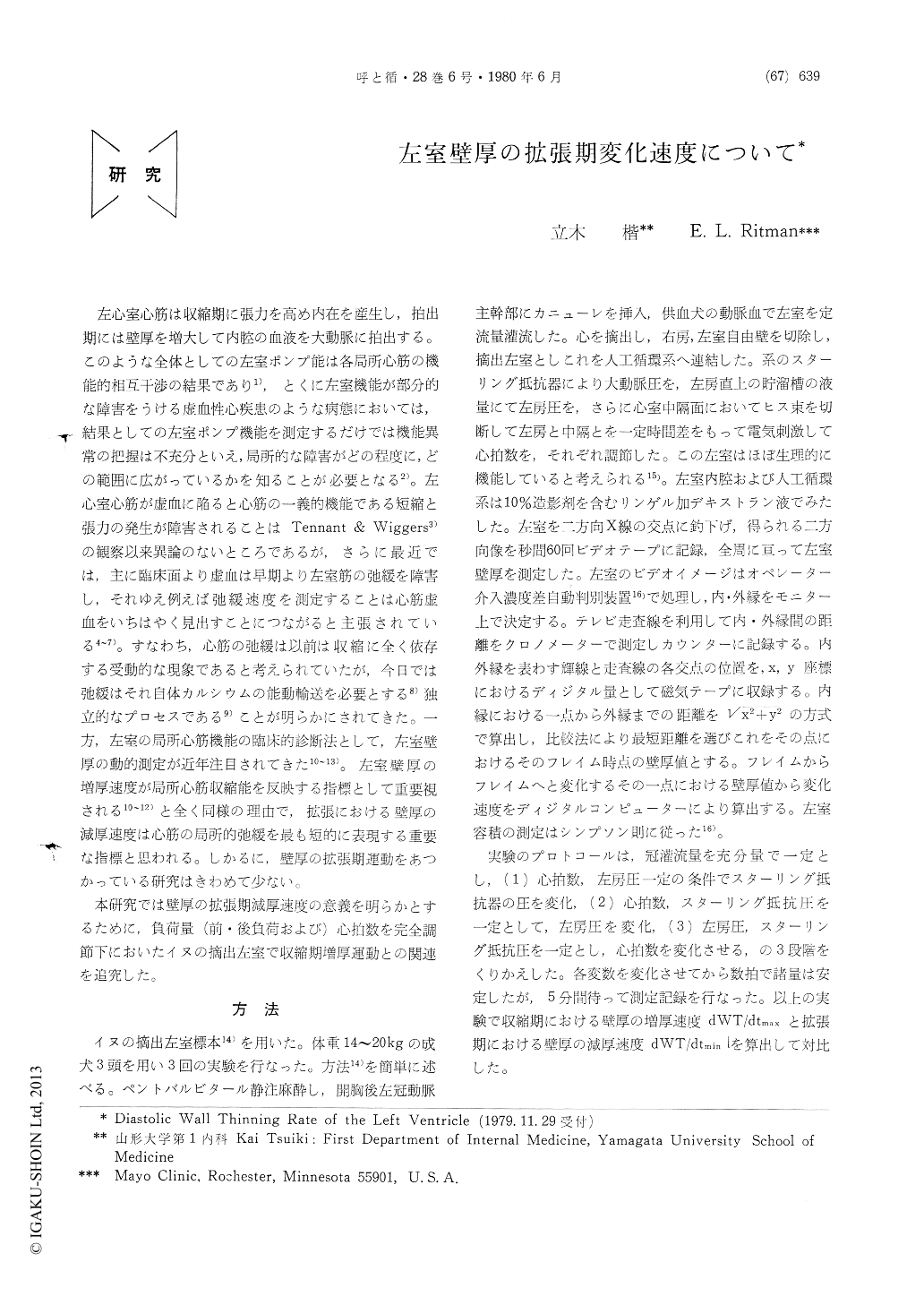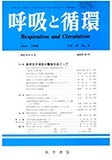Japanese
English
- 有料閲覧
- Abstract 文献概要
- 1ページ目 Look Inside
左心室心筋は収縮期に張力を高め内在を産生し,拍出期には壁厚を増大して内腔の血液を大動脈に拍出する。このような全体としての左室ポンプ能は各局所心筋の機能的相互干渉の結果であり1),とくに左室機能が部分的な障害をうける虚血性心疾患のような病態においては,結果としての左室ポンプ機能を測定するだけでは機能異常の把握は不充分といえ,局所的な障害がどの程度に,どの範囲に広がっているかを知ることが必要となる2)。左心室心筋が虚血に陥ると心筋の一義的機能である短縮と張力の発生が障害されることはTennant & Wiggers3)の観察以来異論のないところであるが,さらに最近では,主に臨床面より虚血は早期より左室筋の弛緩を障害し,それゆえ例えば弛緩速度を測定することは心筋虚血をいちはやく見出すことにつながると主張されている4〜7)。すなわち,心筋の弛緩は以前は収縮に全く依存する受動的な現象であると考えられていたが,今日では弛緩はそれ自体カルシウムの能動輸送を必要とする8)独立的なプロセスである9)ことが明らかにされてきた。
Mechanical determinants of maximum diastolic wall thinning rate (dWT/dtmin) were explored in canine metabolically subported isolated working left ventricle with artificial systemic circulation. Wall thickness was measured angiographically at an equatorial point in the ventricular free wall and the maximum systolic wall thickening rate (dWT/dtmax) and dWT/dtmin were computed using videometry system. The effect of changes in preload (controlled left atrial pressure), afterload (aortic diastolic pressure controlled by a Starling resister), and heart rate (by artificial atrial pacing) on dWT/dtmin, when induced independently, was studied as compared to the concomitant change in dWT/dtmax.
As preload increased, and also as afterload decreased, dWT/dtmin was increased with a pararell increase in dWT/dtmax. This increase in the rate of diastolic relaxation is attributable to the increase in stroke volume (extent of systolic fiber shortening) through the mechanism of Frank-Starling effect and force-velocity relationship, respectively, or attributable to the change in total load itself which is known as a determinant of diastolic relaxation rate. When the pacing increased heart rate upto 180/min, both thickening and thinning rates increased; the increase in the former being greater than the latter. This dissociation between the systolic and diastolic events may be interpreted by Bowditch effect as follows. Tachycardia accompanies an increase in the rates of contraction and relaxation equally (Bowditch effect). Thereby an increased rate in contraction may be accompanied by a decrease in ventricular end-systolic volume (that is in other words an increase in endsystolic wall thickness). Thus, a more increase in relaxing rate appeared as a result of a decrease in end-systolic volume, than estimated by the Bowditch effect per se.

Copyright © 1980, Igaku-Shoin Ltd. All rights reserved.


